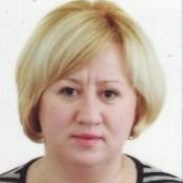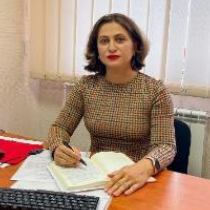International Journal of Education and Management Engineering (IJEME)
IJEME Vol. 15, No. 4, 8 Aug. 2025
Cover page and Table of Contents: PDF (size: 739KB)
Professional Business Game as an Active Practice-Oriented Method of Teaching Modern Students in Technical Higher Education Institutions
PDF (739KB), PP.50-63
Views: 0 Downloads: 0
Author(s)
Index Terms
Professional Business Game, Active Teaching Methods, Efficiency Coefficient, Students, Higher Education Institution, Teacher
Abstract
The purpose of the scientific article is to identify a possible solution to the problem of improving students’ training effectiveness through the combined usage of active forms and methods of teaching students among the dependent learning parameters set. The authors came to this hypothetical opinion based on the comparative analysis results of previous studies, which confirm that the usage of active forms and methods of teaching students is the right vector for solving the lifelong problem of learning improving the effectiveness.
It has been established that the available psychological and pedagogical literature does not provide specific solutions for modern students - cyber-socialised youth, which would help to substantiate the best ways to intensify students' learning and cognitive activity.
Previous scientific studies have confirmed that the group of people who are most addicted to computer games, as practice shows, is difficult to motivate to study using traditional approaches when there is a distracting and, to some extent, gambling factor.
Based on these circumstances, the proposed research is obviously logical from the need to improve the theory and methodology of vocational education through the usage of active forms and methods of teaching students. New circumstances have determined the subject of the study, which is a professional business game. It has been experimentally determined that during a professional business game students will use simulation models to solve professional problems. To organise and conduct a professional business game, teachers define game and functional goals. In the above variant of the professional business game structural scheme, the goal of accelerating the discipline development through students' learning activation is achieved. Organising and conducting a professional business game as an active teaching method involves preparation of both students and teachers for it, and also requires the methodological materials and technical means availability, which helps to increase the classes effectiveness conducted in a game form and to form professional competencies in students. The article provides practical steps for preparing participants of a professional business game.
Cite This Paper
Lesia M. Kozubtsova, Valerii O. Lishchyna, Igor M. Kozubtsov, Halyna L. Isaienko, Lesia O. Shevchuk, " Professional Business Game as an Active Practice-Oriented Method of Teaching Modern Students in Technical Higher Education Institutions", International Journal of Education and Management Engineering (IJEME), Vol.15, No.4, pp. 50-63, 2025. DOI:10.5815/ijeme.2025.04.05
Reference
[1]Order of the Cabinet of Ministers of Ukraine (2022). On approval of the Strategy for the Development of Higher Education in Ukraine for 2022-2032, https://zakon.rada.gov.ua/laws/show/ 286-2022-р.
[2]Verbitsky, A. (1991). Active learning in higher school: contextual approach, Kyiv, Vyshaya Shkola.
[3]Herger, M. (2014). Enterprise Gamification: Engaging People by Letting Them Have Fun: The Basics. Create Space Independent Publishing Platform.
[4]Chou, Yu-Kai (2016). Actionable Gamification: beyond points, badges and leaderboards. Octalysis Media: Fremont. CA. Revista Internacional de Organizaciones, 17, 137-114. DOI: 10.17345/rio18.137-144.
[5]Gutyryak, O., & Pavlishak, O. (2018). Business game as a method of active learning of future specialists. Youth and the Market, 11(166), 47–51.
[6]Volkova, N.P. (2018). Gamifi cation as one of the trends of modern higher education. Modern higher education: problems and prospects. VI All-Ukrainian Scientifi c and Practical Conference of students, postgraduates, and scientists. Dnipro, 33-35.
[7]Arutyunov, Y., Borisova N., & Kolesnichenko S. (1983). On the classification of active learning methods. Interdepartmental school-seminar on active teaching methods “Application of active teaching methods in the educational process”: abstracts. (рр. 21–24), Riga.
[8]Korotyaev, B. (1989). Learning is a creative process. Kiev: Prosveshchenie.
[9]Kozlova, O., & Razu, M. (1978). Business games and their role in staff development. Kyiv: Znanie.
[10]Syroezhin, I. (1970). Essays on the theory of production organizations. Kyiv: Ekonomika.
[11]Belkin, I.V. (2011). Pedagogical conditions for the emergence of business games in higher education institutions. Humanitarian, 22, 3–5.
[12]Freeman, S., Eddy, S., McDonough, M., Smith, M.K., Okoroafor, N., Jordt. H., et al. (2014). Active learning increases student performance in science, engineering, and mathematics. Proc Natl Acad Sci USA;111:8410-5. DOI: 10.1073/pnas.1319030111.
[13]Katerusha, O.P. (2009). Business games as a means of cognitive activity of students. Higher school, 12, 53–60.
[14]«Gamification Improves Work Experience for 91% of Employees, Increases Productivity Across U.S. Companies» (Press release). PR Newswire. August 6, 2015. https://enterpriseengagement.org/newswire/content/8468367/survey-gamification-improves-work-experience-for-91-of-employees.
[15]Yavorska, Zh. (2005). Business games and their role in the training of modern specialists, Bulletin of Lviv University. Pedagogical Series, 19, 1, 241–246.
[16]Ocheretna, N.D. (2013). Peculiarities of application of business games in the process of learning a foreign language in higher education institutions. Pedagogical education: theory and practice, 14, 206–210.
[17]Kilgour, P., Reynaud, D., Northcote, M.T., & Shields, M. (2015). Role-playing as a tool to facilitate learning, self-reflection and social awareness in teacher education. International Journal of Innovative Interdisciplinary Research, 2(4), 8–20.
[18]Kozubtsov, I., Nesterov, O., Slisar, P., & Kiyanovskyj, K. (2023). Features of the formation of a cadet leader in the courses of professional military education L-1A, B, C (tactical level of military education). Perspectives and Innovations of Science (Series ‘Pedagogy’), 15(33), 235–248.
[19]Kozubtsov, I. (2023). Methodology of the Professional-Business Game for the Development of a Cadet Leader in Professional Training Courses (L-1B) of the Tactical Level of Military Education. IgMin Research - STEM A Multidisciplinary Open Access Journal, 1, 2, 160–169. DOI: 10.61927/igmin132.
[20]Use of the latest technologies in the process of combat training and military education according to NATO standards. Ukraine to NATO magazine. URL: https://ukrainetonato.com.ua/osvita-ta-boyova-pidhotovka-za-standartamy-nato/vykorystannia-novitnikh-tekhnolohiy-u-protsesi-boyovoi-pidhotovky-ta-viyskovoi-osvity-za-standartamy-nato.
[21]De Smale, S., Overmans, T., Jeuring, J., & Van de Grint, L. (2016). The effect of simulations and games on learning objectives in tertiary education: A systematic review. In de Gloria, A., Veltkamp, R. (eds), Games and Learning Alliance. GALA 2015. Lecture Notes in Computer Science, Springer, 9599, 506–516.
[22]Ding, D., Guan, G., & Yinghui, Y. (2017). Game-based learning in tertiary education: A new learning experience for the Generation Z. International Journal of Information and Education Technology, 7(2), 148–152.
[23]Xomenko, O. (1994). Educational business games as a means of forming professional skills of students of technical schools and colleges (for example, construction specialties). Extended abstract of candidate’s thesis. Kyiv.
[24]Wiggins, B.E. (2016). An overview and study on the use of games, simulations, and gamification in higher education. International Journal of Game-Based Learning, 6(1), 18–29.
[25]Kozubtsov, I., & Nesterov, O. (2024). The Conceptual View of the Department of Combat use of Communication Units on the Creation of a Training Game Complex for Training Military Specialists on the Basis of Leadership. IgMin Research - STEM A Multidisciplinary Open Access Journal, 2, 2, 048–058. DOI: 10.61927/igmin145.
[26]Rusnak, I., Mirnenko, V., Kas’ianenko, M., Oliferuk, V., & Viter, D. (2021). Innovative military education: state and prospects of development. Collection of scientific papers “Military Education”, 2 (44), 9–20.
[27]Saifetdinov, Kh.I. (1998). Reforming combat training: computer forms of training. Military Th ought, 36, 77–81.
[28]Rusnak, I.S, & Shevchenko, V.L. (2002). Problems of modernization and creation of military training and modeling complexes. Science and Defense, 1, 32– 39.
[29]Kozubenko, O. (2021). New training methods allow young offi cers to immediately perform their offi cial duties. Army Inform News Agency, Ministry of Defense of Ukraine, https://armyinform.com.ua/2021/05/18/novi-metodykynavchannya-dozvolyayut-molodym-oficzeram-odrazu-vykonuvatyposadovi-obovyazky.
[30]Riley, S., & McCabe, G. (2021). Enabling staff-student co-creation of experiential learning at scale. Times Higher Education. https://www.timeshighereducation.com/campus/enabling-staffstudent-cocreation-experiential-learning-scale.
[31]Rigopoulos G. (2022).Assessment and Feedback as Predictors for Student Satisfaction in UK Higher Education. International Journal of Modern Education and Computer Science (IJMECS), 14, 5, pp. 1–9.
[32]Dale, E. (1969). Audio-Visual Methods in Teaching. 3rd ed. New York: Holt, Rinehart & Winston.
[33]Sibulkin, J. (2018). Analysis on Content-Based Instruction Methods Influencing Student Outcomes in Higher Education. Open Journal of Social Sciences, 6, 176-194. doi: 10.4236/jss.2018.611013.
[34]Reeves, T.C. (2000) Enhancing the worth of instructional technology research through 'design experiments' and other development research strategies. Symposium on International perspectives on instructional technology research for the 21st century (session 41.29: New Orleans, LA, USA).
[35]McClintock, C. (2000). Creating communities of practice for experiential learning in policy studies. Social Change, Public Policy and Community Collaboration: Training Human Development Professionals. Editors: P. Ralston, R. M. Lerner, A.K. Mullis, C.B. Simerly, and J.P Murray. Publisher: Springer, 32–51.
[36]Kreber, C. (2001). Learning experientially through case studies? A conceptual analysis. Teaching in Higher Education, 6, 217–228.
[37]Hakeem, S.A. (2001). Effect of experiential learning in business statistics. Journal of Education for Business, 77, 95–98.
[38]Rocha, C. (2000). Evaluating experiential teaching methods in a policy practice course: The case for service learning to increase political participation. Journal of Social Work Education, 36, 53–63.
[39]Jessup, M. (2001). Sociopoly: Life on the boardwalk. Teaching Sociology, 29, 102–109.
[40]Adebayo, E.O., & Ayorinde, I.T. (2022). Efficacy of Assistive Technology for Improved Teaching and Learning in Computer Science. International Journal of Education and Management Engineering (IJEME), 12, 5, 9–17. DOI: 10.5815/ijeme.2022.05.02.
[41]Dorn, D. (1989). Simulation games: One more tool on the pedagogical shelf. Teaching Sociology, 17, 10–18.
[42]Blokhina, I.O., & Moskalenko O.V. (2021). The role and place of professionally significant qualities of a teacher in the process of distance learning. Actual problems of psychology: a collection of scientific works of the H.S. Kostiuk Institute of Psychology of the National Academy of Pedagogical Sciences of Ukraine, XIV, 4, 15–25.
[43]España, G.O. (2025). De la innovación a la acción: la tecnología educativa como motor del desempeño docente. Revista Ciencia Multidisciplinaria CUNORI, 9(1), 1–25. https://doi.org/10.36314/cunori.v9i1.314.
[44]Kapp, K. (2012). The gamification of learning and instruction game-based methods and strategies for training and education. San Francisco, USA: Pfeiffer.
[45]Tkachenko, O. (2015). Gamification of education: formal and informal space. Topical issues of Humanities, 11, 303–309.
[46]Petrenko, S. (2018). Gamification as an innovative educational technology. Innovation in education, 2, 7, 177–185.
[47]Chaika, G.V. (2006). Th e infl uence of computer games as a new factor of culture on the formation of personality. Actual Problems of Psychology, 3, 218-296.




